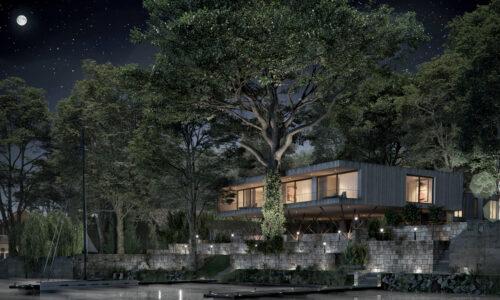
Exploring the World of 3D Visualizations: How They Work
- Yissel Álvarez
- August 10, 2023
- 3D Design
- 0 Comments
In a world where imagination knows no bounds, 3D visualizations have emerged as a powerful tool that transforms creative concepts into tangible realities. Whether it’s architectural marvels, product prototypes, or captivating animations, 3D visualizations have taken centre stage in various industries. In this article, we delve into the captivating realm of 3D visualizations, unraveling their essence and shedding light on the intricate workings that bring them to life.
Read this article: How to Use 3D Visualization to Effectively Communicate Architectural Designs
Understanding 3D Visualizations
At its core, a 3D visualization is a representation of an object, scene, or idea in three-dimensional space. Unlike traditional 2D images, 3D visualizations provide depth, perspective, and a sense of realism that ignites the imagination. They are a product of advanced computer graphics, mathematical algorithms, and artistic finesse, culminating in a harmonious fusion of technology and creativity.
The Elements of 3D Visualizations
- Geometry: Central to 3D visualizations is geometry, the foundation upon which the entire construct is built. Objects are defined by vertices, edges, and faces, which collectively form intricate shapes and structures.
- Textures and Materials: Realism is elevated through textures and materials that emulate the tactile qualities of surfaces. Whether it’s the grain of wood or the sheen of metal, these elements breathe life into virtual objects.
- Lighting and Shadows: Just as in the physical world, lighting plays a crucial role in 3D visualizations. Various lighting techniques create shadows, highlights, and reflections, adding depth and authenticity.
The Process of Creating 3D Visualizations
- Conceptualization: Every journey begins with an idea. During this phase, artists and designers sketch out the vision, outlining the elements and composition of the scene.
- Modeling: Translating concepts into digital reality involves 3D modeling. Using specialized software, artists sculpt, shape, and manipulate the geometry of objects, breathing life into the virtual canvas.
- Texturing and Shading: The next step involves adorning the models with textures and materials. This meticulous process involves mapping images onto the surfaces, simulating realism and enhancing visual appeal.
- Lighting Design: Crafting the right lighting setup is akin to a painter selecting the perfect palette. Artists position virtual lights strategically, evoking mood, and casting convincing shadows.
- Rendering: This stage brings all the elements together. Rendering involves processing the scene, calculating the interplay of light, shadows, and textures, resulting in a high-resolution image or animation.
- Post-Processing: Much like editing a photograph, post-processing adds the final touches. Colour correction, adding filters, and refining details elevate the visualization’s impact.
The Magic Unveiled: How 3D Visualizations Work
At the heart of 3D visualizations lies a harmonious blend of technical prowess and artistic ingenuity. These visual marvels are crafted by skilled professionals who harness cutting-edge software and tools to sculpt a digital reality that mirrors the physical world. By leveraging intricate algorithms and mathematical calculations, they transform raw data into a breathtaking visual experience.
Applications and Impact
The applications of 3D visualizations span an array of industries:
- Architecture and Real Estate: Architects use 3D visualizations to showcase building designs, allowing clients to explore spaces before construction begins.
- Product Design: Designers create lifelike prototypes, enabling companies to test and refine products in a virtual environment.
- Entertainment and Media: 3D animations bring characters and worlds to life in films, video games, and virtual reality experiences.
- Education and Training: Complex concepts become digestible through interactive 3D models, enhancing learning and skill development.
In the ever-evolving landscape of technology and creativity, 3D visualizations stand as a testament to human innovation. These captivating creations blur the lines between imagination and reality, offering a glimpse into what is possible. As you embark on your journey into the realm of 3D visualizations, remember that each pixel, texture, and shadow contributes to the magic that unfolds before your eyes—a symphony of artistry and technology that continues to shape the world around us.
If you need assistance with your architectural project and require visualization services, please feel free to contact us for further information.







